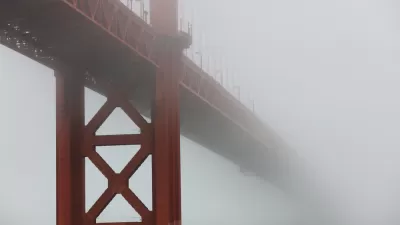The research is clear: For climate leadership, look no further than young people, people of color, and young people of color.

Ahead of the November election, environmental scientist and advocate Ayana Elizabeth Johnson reviews the polling on climate change to identify key "environmental voters." The upshot? Millennials and people of color—and millennials of color—could save the planet.
While concern for environmental issues falls decidedly along party lines, the "core constituency" for climate action is the same even within and across parties. Millennials are "twice as likely as older voters to care deeply about the environment," she writes, with 67 percent believing climate change should be a "top priority" for the federal government. Millennials are also "the generation most supportive of expanding wind farms, least supportive of expanding fossil fuel extraction, and most concerned about the lack of protection of animals, habitats, water quality, and parks."
Environmental protection also tends to be a higher priority for Latino, Black, and Asian voters than for whites:
"When it comes to climate change, the polling data is striking: 70 percent of Latinos and 56 percent of blacks believe the earth is getting warmer because of human activity, compared to 44 percent of whites. Additionally, 54 percent of people of color think addressing global warming should be a top priority for the government, compared to 22 percent of whites — a gap that has widened by 10 percent over the last decade as fewer whites consider it a priority."
Climate policy is increasingly on the radar of American voters overall, Johnson writes, but understanding this breakdown highlights an opportunity for advocates to turn out a new bloc of environmental voters.
FULL STORY: Young voters and voters of color are key to climate policy

Alabama: Trump Terminates Settlements for Black Communities Harmed By Raw Sewage
Trump deemed the landmark civil rights agreement “illegal DEI and environmental justice policy.”

Planetizen Federal Action Tracker
A weekly monitor of how Trump’s orders and actions are impacting planners and planning in America.

The 120 Year Old Tiny Home Villages That Sheltered San Francisco’s Earthquake Refugees
More than a century ago, San Francisco mobilized to house thousands of residents displaced by the 1906 earthquake. Could their strategy offer a model for the present?

Opinion: California’s SB 79 Would Improve Housing Affordability and Transit Access
A proposed bill would legalize transit-oriented development statewide.

Record Temperatures Prompt Push for Environmental Justice Bills
Nevada legislators are proposing laws that would mandate heat mitigation measures to protect residents from the impacts of extreme heat.

Downtown Pittsburgh Set to Gain 1,300 New Housing Units
Pittsburgh’s office buildings, many of which date back to the early 20th century, are prime candidates for conversion to housing.
Urban Design for Planners 1: Software Tools
This six-course series explores essential urban design concepts using open source software and equips planners with the tools they need to participate fully in the urban design process.
Planning for Universal Design
Learn the tools for implementing Universal Design in planning regulations.
Clanton & Associates, Inc.
Jessamine County Fiscal Court
Institute for Housing and Urban Development Studies (IHS)
City of Grandview
Harvard GSD Executive Education
Toledo-Lucas County Plan Commissions
Salt Lake City
NYU Wagner Graduate School of Public Service





























